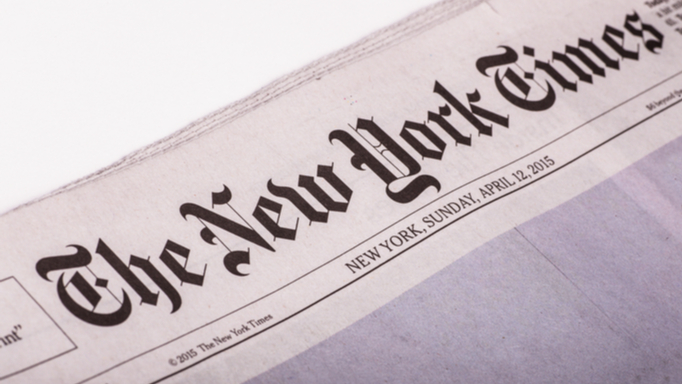New York Times columnist Nicholas Kristof might not be too popular around the (virtual) office water cooler right now.
In a column headlined “When Trump Was Right and Many Democrats Were Wrong,” Kristof argues that President Trump is right on the need to open schools.
Kristof writes as many school districts (including in New York) are again being shut down, ostensibly to protect people from COVID 19.
Here is how Kristof’s column begins:
Some things are true even though President Trump says them.
Trump has been demanding for months that schools reopen, and on that he seems to have been largely right. Schools, especially elementary schools, do not appear to have been major sources of coronavirus transmission, and remote learning is proving to be a catastrophe for many low-income children.
Yet America is shutting schools — New York City announced Wednesday that it was closing schools in the nation’s largest school district — even as it allows businesses like restaurants and bars to operate. What are our priorities?
“I have taught at the same low-income school for the last 25 years, and, truly, I can attest that remote schooling is failing our children,” said LaShondra Taylor, an English teacher in Broward County, Fla.
Some students don’t have a computer or don’t have Wi-Fi, Taylor said.
Just for the record, restaurants need to be saved from financial ruin, too. But Kristof is right about priorities: unless public schools are utterly irrelevant, kids are suffering—from lack of learning and socialization, among other things.
Sure, Kristof takes a pro forma potshot at President Trump’s “blustering” about the need to open schools and his allegedly not doing all he could to fight the virus, but the columnist has the cojones to admit Trump is right about schools.
Kristof makes compelling points:
In both Europe and the United States, schools have not been linked to substantial transmission, and teachers and family members have not been shown to be at extra risk (this is more clear of elementary schools than of high schools). Meanwhile, the evidence has mounted of the human cost of school closures.
“Children learn best when physically present in the classroom,” notes the American Academy of Pediatrics. “But children get much more than academics at school. They also learn social and emotional skills at school, get healthy meals and exercise, mental health support and other services that cannot be easily replicated online.”
One child in eight in America lives with a parent with an addiction — a reflection of America’s other pandemic. I’ve seen kids living in chaotic homes, and for them the school building is a refuge and a lifeline.
America’s education system already transmits advantage and disadvantage from one generation to the next: Rich kids attend rich schools that propel them forward, and low-income children attend struggling schools that hold them back.
School closures magnify these inequities, as many private schools remain open and affluent parents are better able to help kids adjust to remote learning. At the same time, low-income children fall even further behind.
“Students are struggling,” Austin Beutner, superintendent of the Los Angeles Unified School District, where more than four-fifths of students live below the poverty line, told me. “And if you’re not becoming proficient in reading in first, second, third grade, you may face a lifetime of consequences.”
Kristof suggests closing bars and opening schools (the way Europe has done it). Why not let bars practice social distancing and other safety measures and then allow people decide themselves whether they want to go to bars? Still, Kristof’s column already amounts to a big heresy.
Let’s hope that, when the virus can no longer be politicized to detract from Orange Man Bad, officials will begin to come to their senses.

